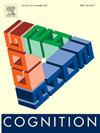微跳显示了视觉工作记忆中保留的空间组织,尽管基于位置的排练有所衰退
IF 2.8
1区 心理学
Q1 PSYCHOLOGY, EXPERIMENTAL
引用次数: 0
摘要
空间为在工作记忆中保留和选择视觉信息提供了一个基础框架。然而,目前尚不清楚的是,视觉工作记忆中的空间组织是否以及如何在时间延长的记忆延迟中持续存在,特别是当备忘录的位置是偶然的,并且从未被探查过报告时。使用工作记忆保留的连续空间标记的研究经常报告说,随着时间的推移,工作记忆的空间组织逐渐衰退,这可能反映也可能不反映工作记忆中空间组织的真正衰退。为了检验这一点,我们利用了最近建立的两个空间眼动(微扫视)标记,即“基于位置的助记排练”和“基于位置的助记选择”,我们在这里研究了短(1秒)、中(3秒)和长(5秒)工作记忆延迟期间和之后的两个标记。我们的研究结果在两个实验中得到了重复,表明虽然基于位置的排练标记可能在工作记忆延迟中减少,但助记符选择仍然锚定在偶然编码的物体位置上。这意味着工作记忆中的空间组织被保留了下来,即使活跃的空间排练的标记同时衰退了,这表明工作记忆有一个“沉默的空间脚手架”的概念。本文章由计算机程序翻译,如有差异,请以英文原文为准。
Microsaccades reveal preserved spatial organisation in visual working memory despite decay in location-based rehearsal
Space provides a foundational scaffold for retaining and selecting visual information in working memory. It remains unclear, however, whether and how spatial organisation in visual working memory persists over temporally extended memory delays, particularly when the locations of memoranda are incidental and never probed for report. Studies using continuous spatial markers of working-memory retention often report a gradual decay over time, which may or may not reflect a genuine decay in spatial organisation within working memory. To examine this, we capitalised on two recently established spatial eye-movement (microsaccade) markers of ‘location-based mnemonic rehearsal’ and ‘location-based mnemonic selection’ that we here studied during and following short (1 s), medium (3 s), and long (5 s) working-memory delays. Our findings, replicated across two experiments, demonstrate that while markers of location-based rehearsal may diminish throughout the working-memory delay, mnemonic selection remains anchored to incidentally encoded object locations. This implies that spatial organisation in working memory is preserved even when markers of active spatial rehearsal have meanwhile decayed, suggesting the notion of a “silent spatial scaffold” for working memory.
求助全文
通过发布文献求助,成功后即可免费获取论文全文。
去求助
来源期刊

Cognition
PSYCHOLOGY, EXPERIMENTAL-
CiteScore
6.40
自引率
5.90%
发文量
283
期刊介绍:
Cognition is an international journal that publishes theoretical and experimental papers on the study of the mind. It covers a wide variety of subjects concerning all the different aspects of cognition, ranging from biological and experimental studies to formal analysis. Contributions from the fields of psychology, neuroscience, linguistics, computer science, mathematics, ethology and philosophy are welcome in this journal provided that they have some bearing on the functioning of the mind. In addition, the journal serves as a forum for discussion of social and political aspects of cognitive science.
 求助内容:
求助内容: 应助结果提醒方式:
应助结果提醒方式:


